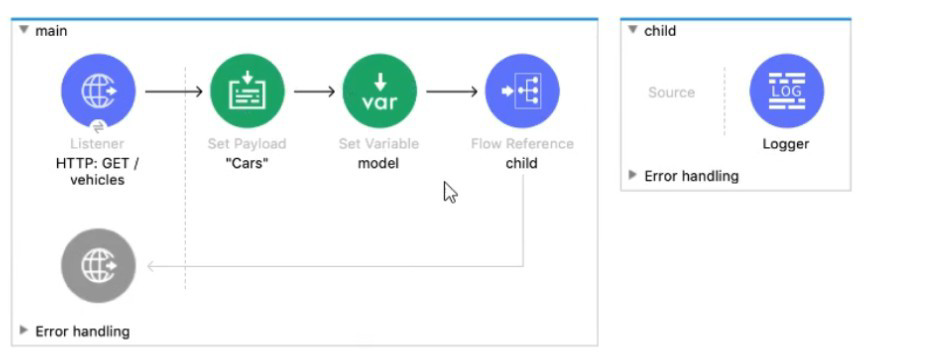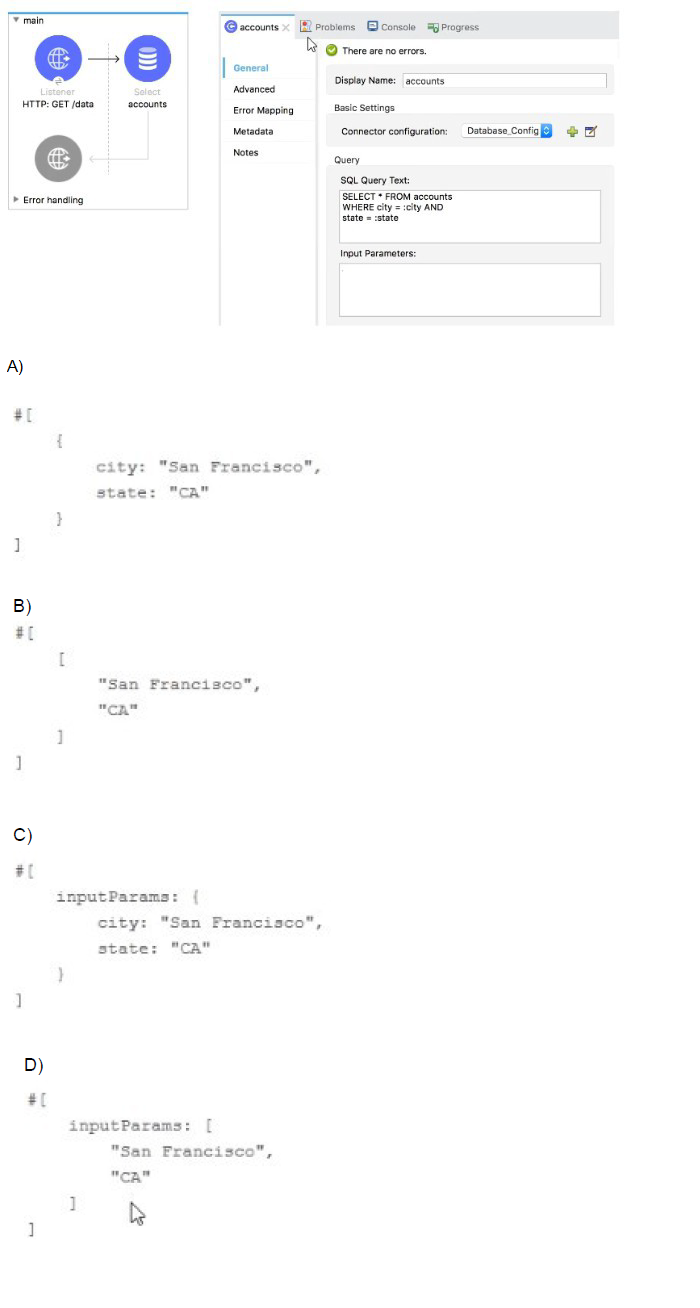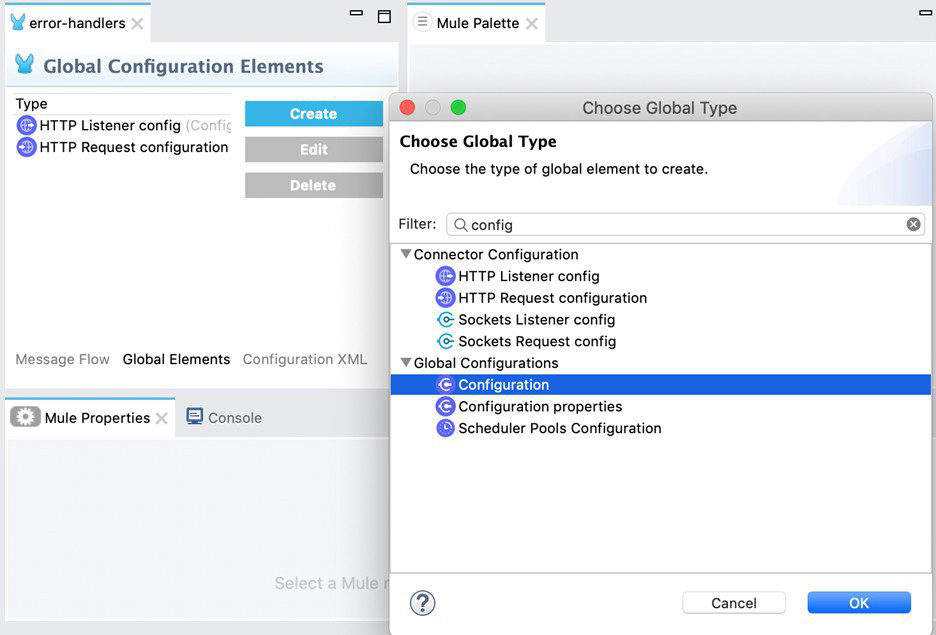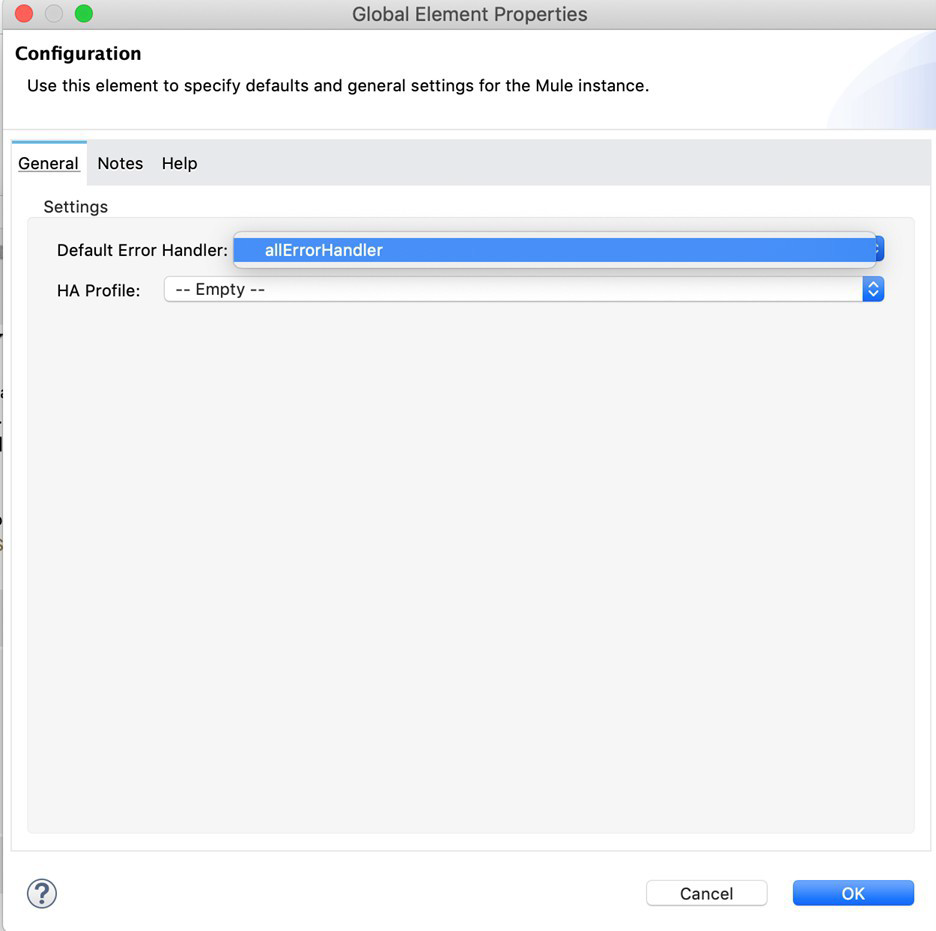
- Email support@dumps4free.com

Refer to the exhibits.

The main flow contains a Flow Reference to the child flow.
A web client sends a GET request to the main flow's HTTP Listener that includes a make query parameter.
What values are accessible in the child flow?
A. payload
B. payload
make query param
C. payload model var
D. payload
make query param model var
Refer to the exhibit.

What expression correctly specifies input parameters to pass the city and state values to the SQL query?
A. Option A
B. Option B
C. Option C
D. Option D
A Mule application contains a global error handler configured to catch any errors.
Where must the global error handler be specified so that the global error handler catches all errors from flows without their own error handlers?
A. A configuration properties file
B. Nowhere, the global error handler is automatically used
C. A global element
D. The pom.xml file
Explanation:
Correct answer is A global element Global error handlers are to be created in global element .
Quick note to remember here is Global error handlers come in to picture only when there are no error handlers specified as flow level.
Steps to create Global error handler
1) Click Global Elements to open Global Configuration Elements. Global Elements is located below the Studio canvas
2) In Global Configuration Elements, click Create to open the Choose Global Type dialog

Graphical user
Description automatically generated
3) From the dialog, select Global Configuration - Configuration, and then click OK to open

Graphical user
interface, text, application, email
Description automatically generated
4) From the select Configuration dialog, select allErrorHandler for the Default Error Handler field, and click OK.
What valid RAML retrieves details on a specific customer by its customerId as a URI parameter?
A. 1. /customers:
2. /get:
3. /customerId:
B. 1. /customers:
2. /{customerId}:
3. get:
C. 1. /customers:
2. /customerId:
3. get:
D. 1. /customers:
2. get:
3. /{customerId}:
Explanation:
Correct answer is below as it follows the correct syntax.
/customers:
/{customerId}:
get:
What statement is a part of MuleSoft's description of an application network?
A. Creates and manages high availability and fault tolerant services and infrastructure
B. Creates reusable APIs and assets designed to be consumed by other business units
C. Creates and manages a collection of JMS messaging services and infrastructure
D. Leverages Central IT to deliver complete point-to-point solutions with master data management
Explanation:
Creates reusable APIs and assets designed to be consumed by other business units
| Page 12 out of 47 Pages |
| Previous |